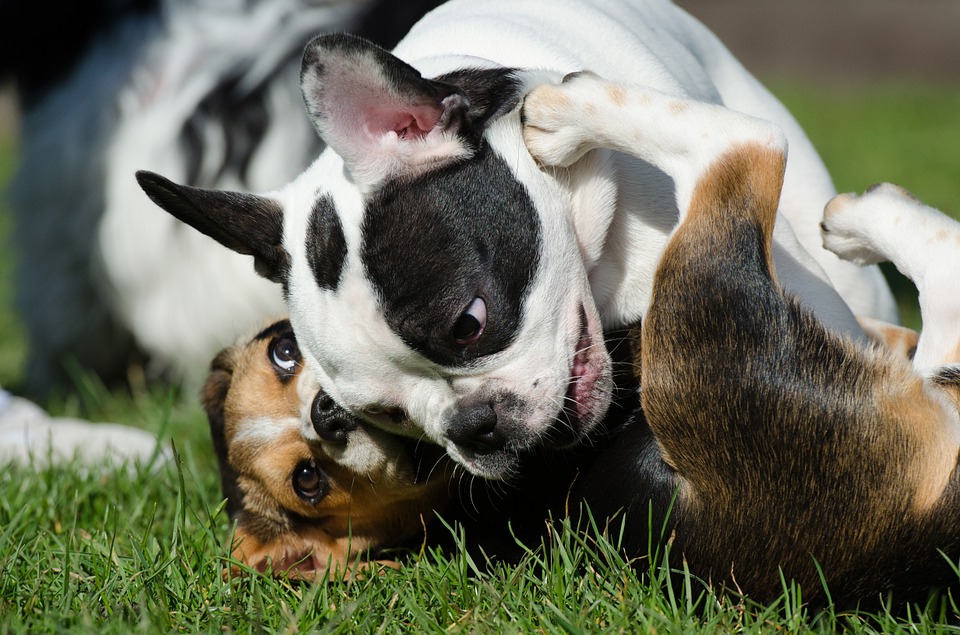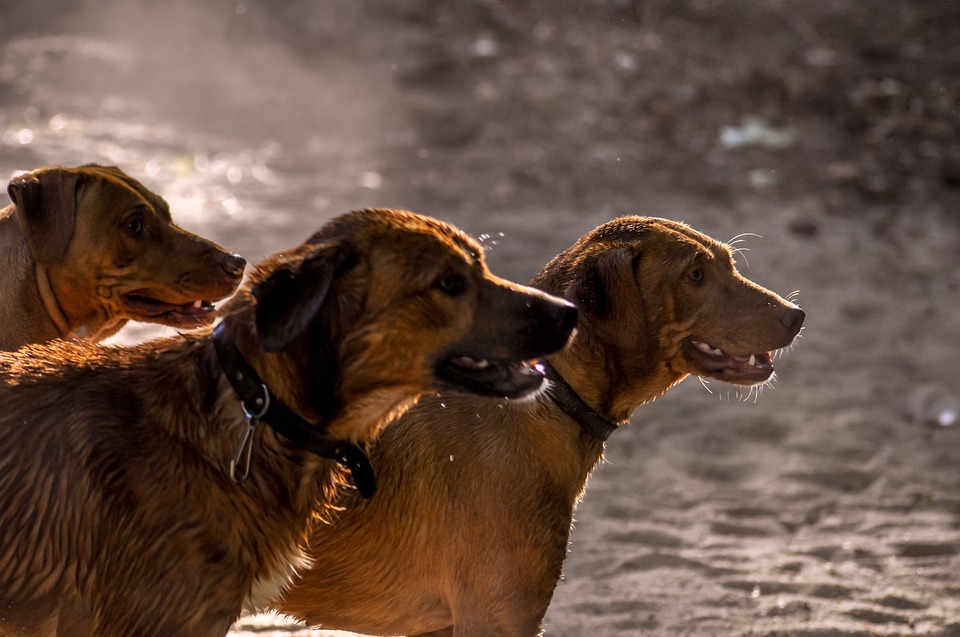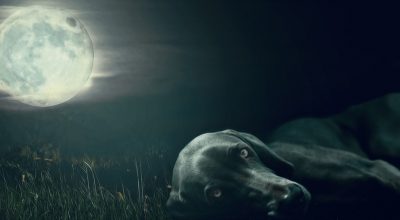When you walk your dog outdoors, everything might be serene and picture-perfect. Out of the blue, something catches your dog’s attention, such as another dog, causing them to go wild and crazy. They will be barking nonstop and pulling at the leash. This is a familiar scenario. If you have a reactive dog, this can happen repeatedly. There are several reasons dogs are reactive. In some cases, they feel threatened and do not fully understand what’s going on. They may have had experiences where they were attacked by other dogs, or they were not correctly socialized as puppies. There might be cases your dog had terrible experiences in dog daycare or at the dog park. No matter the cause of your dog’s overreaction, it is crucial to move forward and train your dog. This article provides you with vital tips on how to socialize a reactive dog.
Reactive Displays of Aggression

This type of aggression often has the goal of increasing the distance between them and uncomfortable triggers. It can be caused by excitement or overstimulation. Aggression, in this case, means no harm. It seeks to establish control territory, resources, and protection.
Your dog might be a fearful dog rather than a reactive or aggressive one. Aggression has the intent to harm, as in the case of attack dogs. But fearful dogs have no such intention. Instead, they become reactive to get what they want, which is time and distance.
The following are causes of this behavior:
- Nervous reactivity or aggression
- Overstimulation
- Protecting the territory
- Frustration
- Bullying and intimidation
- Aggression
- Pain
Nervous Reactivity Due to Aggression or Fear
There are several reasons for this behavior. Behavior issues often begin at the breeder and become established at 5 to 8 weeks. In some cases, breeders contribute to the reinforcement of this problem behavior.
Typically, these issues develop due to improper socialization. Ideally, dogs should be socialized before 16 weeks of age. It is the critical time to socialize your puppy. Correct socialization is not merely providing your dog an opportunity to interact with other puppies or dogs.
Socialization before 16 weeks can be risky since your dog is vulnerable to disease. A majority of veterinarians recommend early socialization only if preventive measures are taken. Experts recommend that puppies’ optimum care should be done during the socialization process since they are not yet fully vaccinated. However, some veterinarians still recommend the outdated practice of quarantining puppies until they receive the full set of vaccines.
Puppies and reactive behavior
Puppies learn reactive behavior from their mother and other dogs they are raised with either at the breeder or their new home. If the mother or another dog exhibits reactive behavior, the puppy will witness this and pick up on this behavior, especially in their impressionable early weeks of life. They might be frightened of other dogs because they had early role models who exhibited this behavior.
Your dog might also become reactive if an adult dog has attacked them. Shy dogs at the dog park are typically bullied, which lays down the foundation for fear aggression. Dogs that are overly assertive and unruly will often attack timid and sensitive dogs. Your puppy will determine the behavior of another dog. They might consider it full aggression or find the play inappropriate and overwhelming. It can result in your puppy being reactive to dogs that remind him of the one that attacked him. Or it could make your puppy sensitive and insecure in similar environments where the incident happened, such as parks, confined spaces, and the vet’s office. Traumatic events that occur repeatedly can result in a puppy developing fear and anxiety and generalizing it to all areas and dogs.
If your dog is reactive and fearful, it is crucial to have a plan before socializing them. Never bring your dog to interact with other dogs without a leash, no matter how well-mannered or friendly the other dog is.
10 Ways to Calm Your Reactive Dog
De-stress your dog
Your dog requires emotional detoxification. Steer clear from triggers that cause a reaction to your dog.
Control your dog
Never leave things to chance. You might want to apply the triage method. When you walk them outdoors, cross the street, and have an escape plan. Walk your dog in safe areas far from triggers. Train your dog to U-turn as well as other safety skills. Be alert to what is in front of you and behind you. It is crucial to know where all the exits are. It would be best if you never were off guard.
Block triggers
Make sure to block your dog’s view when you walk them outdoors and even at home. If your dog is checking the windows and doors, make sure to minimize access by putting a shield or opaque paper on the windows. It helps blocks the view outdoors while still letting in some light. If your dog is rushing to the fence in your yard, you need to mitigate this activity. If possible, put your dog in a safe area in your backyard so the house can serve as an obstruction to block their view of any triggers on the street. When your dog is indoors, you can mitigate outside noise with calming and soothing music or white noise such as fans.
Know your dog’s body language
It would be best if you become an expert of your dog’s unique body language. Observe your dog at home and rest. Check their behavior outdoors as well. You might want to research canine body language by checking charts and watching videos. Observe how dogs play and interact. Pick up on cues that show when your dog is relaxed and when he is stressed.
Create a safe environment for your dog
When your dog feels secure and safe, he will stop reacting and running away from things.
Never risk anything
If you are unsure how your dog will react to new situations, such as a new dog or a cute puppy at the end of the road, keep them at a distance. Take your time, or better yet, avoid it altogether.
Switch up your routine
Outdoor walks that become stressful are no fun for your dog. Your dog might react to a dog that rushed to him behind a fence. If you want to take your dog outdoors, it is better to have them safe and secure inside a vehicle rather than walking them.
Counter-conditioning and desensitization
Write down all triggers of your dog. List the most intense ones at the top. You need to work through the list by training your dog to be less reactive with the trigger by providing them with a positive experience.
In some cases, reactive dogs get stimulated by jiggling dog tags. Begin at this point. Feed your dog, high-value treats. Next, jingle a collar gently at a distance where it is barely audible. Pair this anxiety-provoking trigger with something your dog enjoys. You might want to consider free-flowing rewards as long as the anxiety-provoking trigger is happening. Once you stop the trigger, the free-flowing reward is removed as well.
Triggers such as other dogs barking and ringing doorbells are some causes of reactivity in your dogs. You might want to expand the list to include unique things that trigger your dog.
When your dog reaches his threshold, he might not take the food. It would be best if you paired your dog’s anxiety-provoking triggers with something that produces a positive experience to switch up his emotional responses to the triggers. This training might need to be repeated consistently. It requires an investment in time, but it needs to be done.
Reach out to your dog on an emotional level
Keep in mind that your dog is not an entirely bad dog. He is simply reacting according to his primitive instinct. His body has been placed on high alert, which provoked his flight or fight instinct. There are high levels of cortisol and adrenaline, causing crazy reactions in his body.
To mitigate his responses, your dog must have positive experiences at a safe distance under the threshold. Under the threshold, your dog is at a safe distance where the trigger does not elicit a reaction. It can be different with every dog. It would help if you observed your dog’s body language to get clues to keep them under the threshold.
The goal is to expose your dog to triggers safely, so he is still under the threshold. Gradually bring the trigger closer. Behavior training adjustments help in this case.
Teach a different behavior
Train your dog other habits or tricks after you counter condition them. Your dog will exhibit these behaviors instead of undesirable behavior such as lunging and barking at dogs when one approaches them. Your dog should look at you to check if they should react or not.
Facts About Socialization in Dogs

What is dog socialization?
Socialization happens in your dog’s life when they are prepared to enjoy positive experiences in new surroundings, other animals, people, and activities.
Importance of socializing dogs
Socialization is crucial to help your puppy have a relaxed life. Well socialized dogs are happier and friendlier. They are also able to cope with stress better.
Undersocialized dogs can become cautious, anxious, and even aggressive because of fear. They don’t have the skills to handle new situations and people.
Socializing an adult dog
How to socialize a reactive dog? Puppies typically love interacting with large groups of dogs. They play with them at dog parks. However, adult dogs that weren’t exposed to other dogs can become anxious in dog parks.
It would be a problem if you adopted a full-grown adult dog. Once you bring your dog outdoors, they might be shy, anxious, or fearful when meeting other dogs. It is crucial to train out undesirable behavior and habits and help them feel at ease. When it comes to older dogs, you need to have patience in the socialization process. Old habits are difficult to break.
Dog parks and doggy daycare

If you observe that your canine is relaxed after walking outdoors and interacting with other puppies, your next step is to take them to the dog park as part of your socialization plan.
How to socialize a reactive dog? Make sure your dog is leashed and expose them to other dogs gradually. You can leave them outdoors in your yard behind a fence and let them observe other dogs. Pay attention to how your dog reacts to other dogs. After this, slowly work your way to bringing them to the dog park.
Once you are confident enough to take your puppy outside, keep them leashed until they feel relaxed outdoors. Reward your pup with yummy treats for every progress.
In conjunction with bringing your puppy to social settings at the dog park, you might want to enroll them in dog day care at least once a week. It must be part of their routine, which helps enhance their social skills. Your dog might meet a new friend who will become his best buddy.
Keep in mind never to rush things. Introduce new activities every two weeks, which help your puppy relax in various environments over time.
The best time to start socializing your puppy
How to socialize a reactive dog? Your breeder will begin training your puppy as early as three weeks. Between eight weeks to four months, your puppy will be undergoing a socialization period. At this time, they’ll be exposed to other puppies and people who will mold their personality and influence how they will judge things as an adult.
Keep in mind to gradually familiarize them with people, situations, and places early so they won’t be reactive.
During puppyhood, you are laying down the groundwork for your pup’s behavior. Allow them to explore things on their own and have patience. Puppies are naturally curious and want to discover things. It is how they learn about their world.
Final Thoughts – How to Socialize a Reactive Dog
How to socialize a reactive dog? A reactive dog causes embarrassment in social situations. If your dog is suddenly triggered, they will be barking excessively, running, and going wild. Your dog will be difficult to control and might even escape from his leash. As a dog owner, it is crucial to know how to socialize a reactive dog. Train your dog by applying positive reinforcement to help soothe them from reacting to uncomfortable triggers. Ideally, your dog should be trained as early as puppyhood, but keep in mind, it is never too late to train an adult dog as well.

